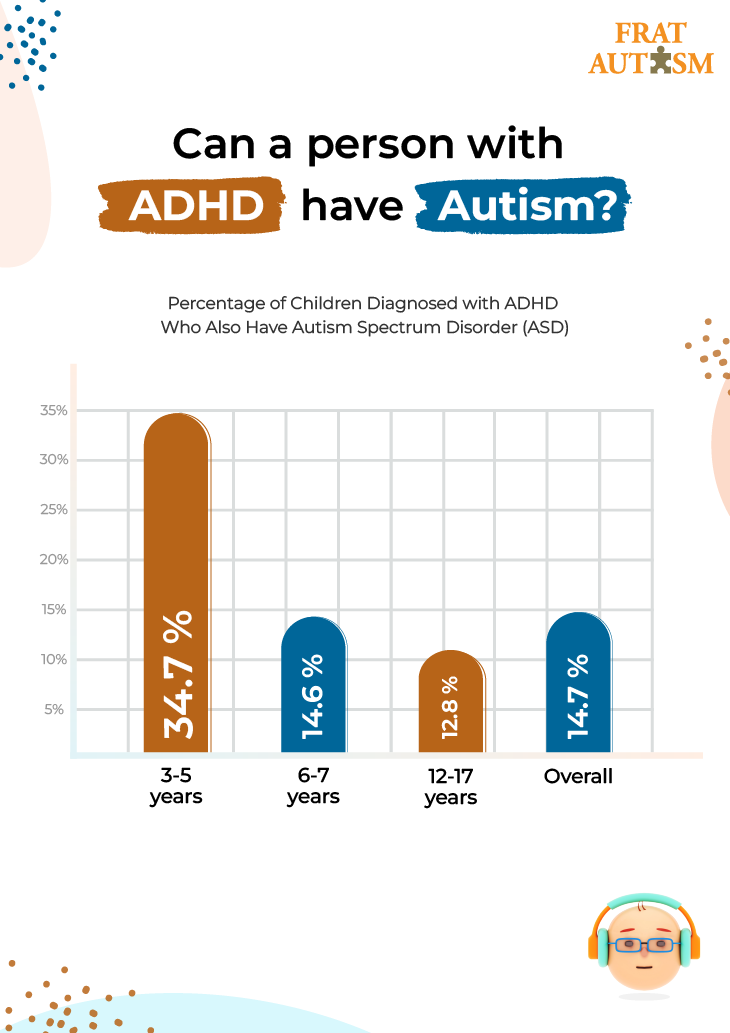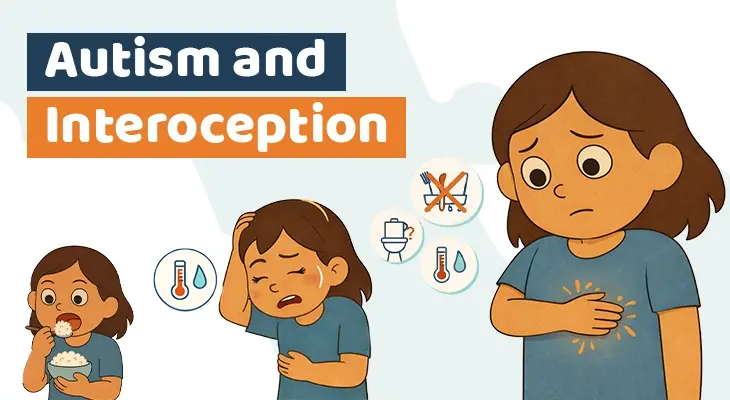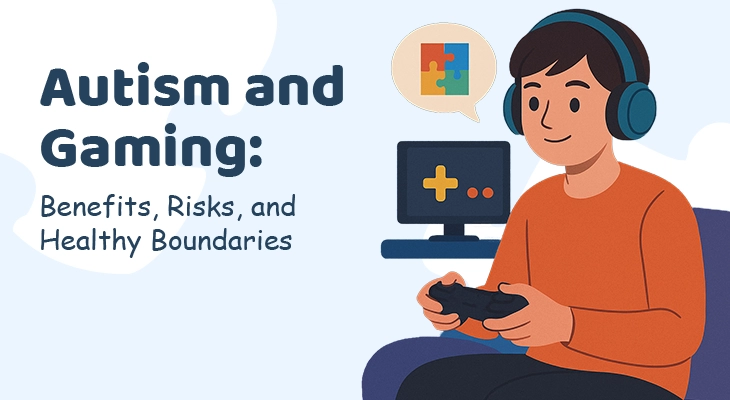What is ADHD?
ADHD, which stands for Attention Deficit Hyperactivity Disorder, is a neurodevelopmental condition. It makes it hard for kids to concentrate, pay attention, sit still, and control impulsivity.
According to the American Psychiatric Association (APA), ADHD affects between 8.4% of children and 2.5% of adults. If you’ve ever felt like your child has boundless energy or struggles to focus for long stretches, they could possibly be suffering from ADHD.
In this blog, we answer your top questions about ADHD and autism.
Table of Contents
- What is ADHD?
- How is ADHD different from Autism?
- Can ADHD be mistaken for Autism?
- How to distinguish ADHD from Autism?
- Can a person have ADHD and Autism?
- What do ADHD and autism together look like?
- Is there a test to identify ADHD and Autism?
- How are ADHD and autism treated?
- Did You Know?
- Conclusion
- References
How is ADHD different from autism?
At first glance, ADHD and Autism can sometimes seem similar, especially in young children. Both conditions can involve challenges with focus, attention, and social interaction. However, the core differences lie in what these challenges stem from:
- ADHD: Think of ADHD as primarily affecting the brain’s processing center for attention, focus, and impulse control. Kids with ADHD often have a strong desire to engage and participate, but their brains struggle to filter distractions or regulate energy levels.
- Autism: Autism, on the other hand, impacts how the brain processes and interprets information from the world around us. This can lead to difficulties with social interaction, communication, and sensory processing. Children with Autism may appear withdrawn or disinterested in social interaction because they find it overwhelming or confusing.
While both conditions can affect development and behavior, they have distinct characteristics. Here’s a quick breakdown of the key differences between ADHD and Autism to help you navigate this new information.
| ADHD | AUTISM | |
| CORE CHALLENGES | Primarily affects attention, focus, and activity levels. | Primarily affects social communication and interaction. |
| SOCIAL INTERACTION | Children may struggle with social skills but generally desire interaction. | Children may have difficulty understanding social cues and prefer solitude. |
| REPETITIVE BEHAVIOR | May fidget or repeat actions due to excess energy. | Repetitive behaviors may be more structured and serve a calming function. |
| SENSORY PROCESSING | Less common, but some children may be sensitive to certain stimuli. | Often involves sensory sensitivities, with children finding certain sights, sounds, or textures overwhelming. |

Download Download & share this infograph card in your network [Free Download]
Since you are reading this blog, you may also be interested in:
Can ADHD be mistaken for Autism?
Because both ADHD and Autism can involve challenges with focus, attention, and social interaction, it’s sometimes possible for them to be misdiagnosed, especially in young children. Further complicating the issue, scientific literature suggests that 50 to 70% of individuals with autism spectrum disorder (ASD) also present with comorbid attention deficit hyperactivity disorder (ADHD) [1]. Here’s how ADHD can be mistaken for autism:
-
Overlapping symptoms
Both conditions can manifest with symptoms like inattention, difficulty following instructions, and fidgeting. This overlap can make it challenging to pinpoint the underlying cause.
-
Early Signs are Subtle
Early signs of both ADHD and Autism can be subtle and may not become readily apparent until children enter school environments with more structured demands.
-
Individual Variation
The way ADHD and Autism manifest can vary greatly from child to child. Some children with ADHD may also have social difficulties, further blurring the lines for diagnosis.
How to distinguish ADHD from Autism?
While ADHD and Autism can share some symptoms, the underlying causes and outcomes can be quite distinct. This infographic breaks down key areas where these conditions overlap and where they show clear differences.

Download Download & share this infograph card in your network [Free Download]
Can a person have ADHD and Autism?
Absolutely! According to the Centers for Disease Control and Prevention (CDC) [3], approximately 14.7% of children diagnosed with ADHD also have Autism Spectrum Disorder (ASD). This percentage differs by age. Let’s delve into the numbers:
- Age 3-5 years: 34.7% of children diagnosed with ADHD also have Autism.
- Age 6-11 years: 14.6% of children diagnosed with ADHD also have Autism.
- Age 12-17 years: 12.8% of children diagnosed with ADHD also have Autism.

Download Download & share this infograph card in your network [Free Download]
What do ADHD and Autism together look like?
Having both ADHD and Autism, also known as co-occurring ADHD and Autism Spectrum Disorder (ASD), can create a unique set of challenges for children. Here’s why:
- Combined Symptoms: A child with both conditions might experience symptoms from both ADHD (like inattention, hyperactivity, and impulsivity) and Autism (like difficulty with social interaction, repetitive behaviors, and sensory sensitivities).
- Complex Interactions: The way these symptoms interact can vary greatly. For example, a child might struggle to focus in class due to both ADHD-related inattention and difficulty processing sensory information from the environment (common in Autism).
- Individual Differences: Just like with each condition on its own, ADHD and Autism can manifest differently in each child. Some children might have a more prominent presentation of ADHD symptoms, while others might experience more prominent Autism traits.
Is there a test to identify ADHD and Autism?
There isn’t a single test to diagnose ADHD or Autism. Instead, a qualified professional will use a variety of methods, which might include interviews, observations, and potentially other assessments.
- For more information on how ADHD is diagnosed, please click here
- For more information on how Autism is diagnosed, check out our blog post Decoding Autism: Essential Tests and Key Indicators You Can’t Afford to Ignore
How are ADHD and Autism treated?
There’s no one-size-fits-all treatment for ADHD, but individuals may benefit from a multi-pronged approach. This includes:
- Medications
- Therapy
- Social Skills Training
- Educational Support
For more information on how to treat ADHD, please click here
Autism Spectrum Disorder (ASD) is a neurodevelopmental disorder, not a disease. This means there’s no cure, but there are a range of therapies that can significantly improve a person’s quality of life. These therapies focus on managing symptoms and developing skills to navigate daily life. Here are some examples:
- Applied Behavior Analysis (ABA Therapy)
- Speech Therapy
- Occupational Therapy
- Social Skills Training
That said, early intervention in autism can make a real difference. According to a study by National Institute of Child Health and Human Development (NICHD), certain children with autism, when provided with timely intervention, exhibited remarkable advancement to the extent that they no longer fall within the autism spectrum as they grow older. To know more, read our blog post Early Intervention in Autism (ASD) – A Life-Changing Opportunity
Conclusion
This blog explored the complexities of ADHD and Autism, conditions that can sometimes appear similar but have distinct characteristics. We delved into the reasons why these conditions might be confused, particularly in young children, and provided resources to help you differentiate between them.
Key Takeaways
- Though ADHD and Autism can share symptoms like inattention and social difficulties, the underlying causes differ.
- Infographics showcased key areas where these conditions overlap and diverge.
- Co-occurring ADHD and Autism is not uncommon. We explored the challenges and unique experiences of children with both conditions.
- There isn’t a single test for either condition, but qualified professionals use a comprehensive evaluation to diagnose them.
- Treatment approaches vary, but both ADHD and Autism can benefit from therapy, medication (for ADHD), and other support systems.







